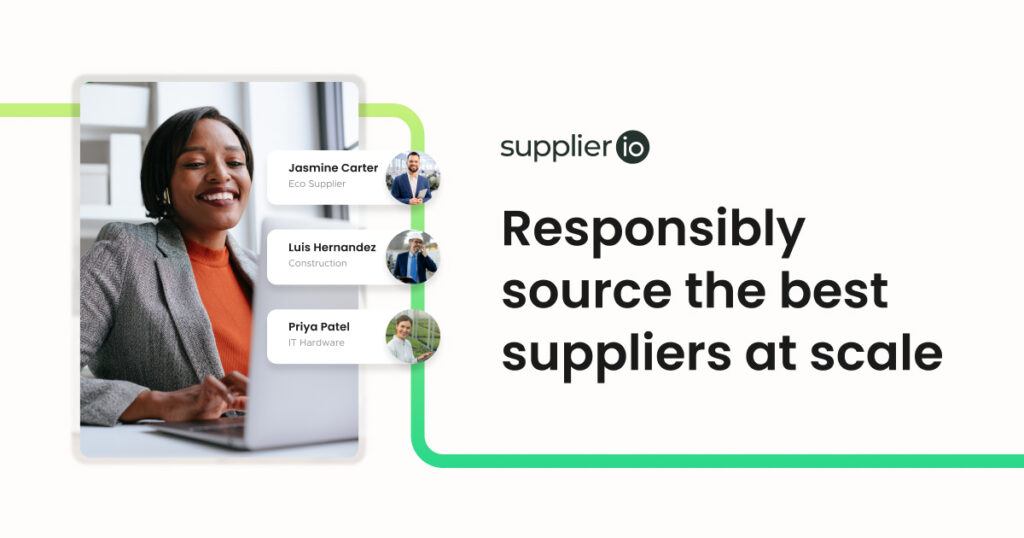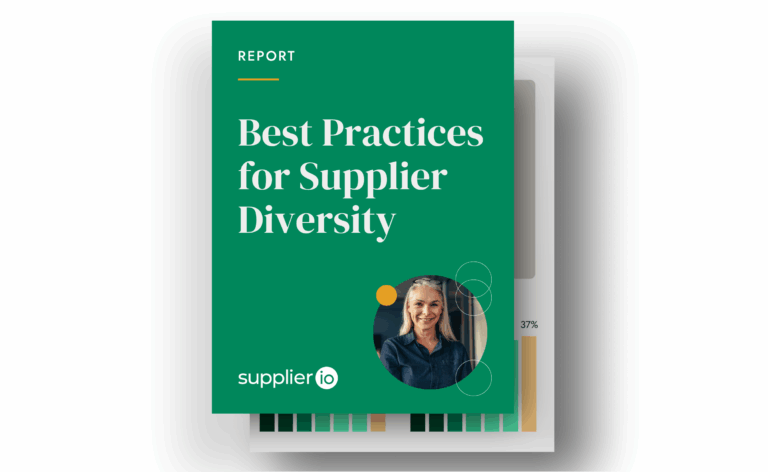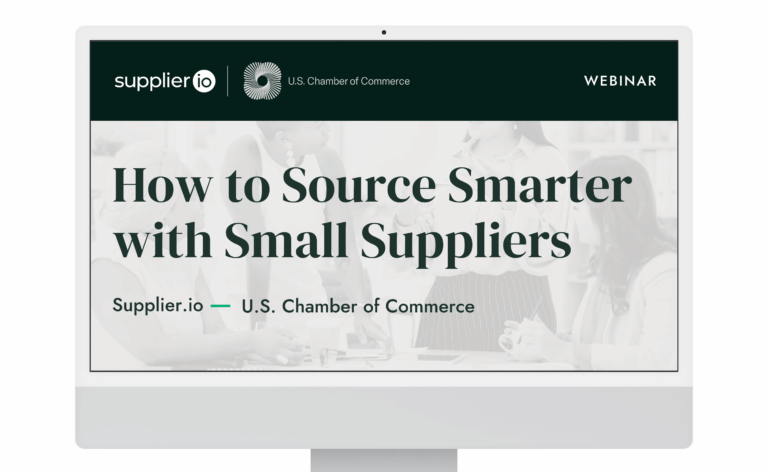Supplier Diversity Best Practices for 2024 with The Hackett Group
The Hackett Group shares how supplier diversity leaders can ensure their programs are successful with a clear roadmap to maturity.

Supplier.io recently spoke with Kurt Albertson, Procurement Advisory – Principal and North American Practice Lead at The Hackett Group, about what supplier diversity leaders can do to ensure their programs are successful this year and beyond. Albertson shared The Hackett Group’s findings from its recent 2024 Procurement Agenda and Key Issues Study. With more than 28 years of experience, Albertson’s insights are both fascinating and actionable.
In 2024, supplier diversity is quickly evolving into a critical component for businesses hoping to drive innovation, improve ESG and DEI initiatives, and enhance their brand reputation. Supplier.io’s latest webinar featuring industry expert Kurt Albertson, Procurement Advisory – Principal and North American Practice Lead at The Hackett Group, shed light on the challenges and opportunities facing supplier diversity leaders at large corporations this year. Drawing on insights from The Hackett Group’s study and real-world experiences, Albertson shared best practices for organizations and their supplier diversity programs to meet the new demands of the era.
Determine Objectives and Measurements at the Beginning
Data is critical for discovery, status accuracy, and reporting, but that data is only useful if clear objectives and measurements are set from the beginning. By establishing measurable and specific metrics for success, organizations can effectively gauge the impact of their supplier diversity initiatives. These objectives and measurements form a strong foundation for successful programs.
“Whether we’re talking about supplier diversity, the implementation of generative AI, trying to drive compliance to preferred suppliers—it all comes back to the same thing: quality of data,” Albertson emphasized. The Hackett Group determined through several studies that the difference between successful and unsuccessful programs is that the former had access to good data while the latter didn’t.
But how do supplier diversity leaders consistently get access to reliable data? Albertson shared that leveraging technology and third-party solutions to improve and manage the supplier diversity program is the number one trend among top performers. Stakeholders are no longer accepting generic information reporting—the numbers need to have credibility. And third-party data can help show the economic impact your spend actually has on communities.
Gain Credibility with Executive Level Sponsorship
Executive sponsorship plays an essential role in the success of supplier diversity programs. “We have to drive alignment with our business stakeholders,” Albertson shared. When executive champions advocate for supplier diversity initiatives at the highest level, like in board meetings, organizations can overcome barriers and leverage resources more effectively to achieve their diversity goals.
Supplier diversity fits perfectly with broader corporate initiatives like ESG and DEI. These two initiatives in particular are growing in importance and are already tied into the organization’s corporate goals. Albertson encouraged leaders to find their champions of ESG and DEI initiatives internally, and then establish solid partnerships with them.
Albertson expressed that gaining credibility and driving adoption is a matter of tying supplier diversity to business objectives that executives already recognize, like risk mitigation, revenue opportunity, and others. Referencing studies by The Hackett Group, Albertson said that diverse suppliers are often more flexible and innovative, which business stakeholders tend to value. He encouraged supplier diversity leaders to shift the conversation to what executives value in order to get buy-in.
ESG for Procurement Succeeds When Clearly Aligned with Corporate Goals
Corporate objectives around sustainability—brand value, compliance with regulations, improving customer satisfaction, etc.—are all about risk, and it’s important to build a procurement program on these corporate objectives. In the US, sustainability has moved into the top 10 corporate objectives within the last five years, moving as high as the top four.
But when you compare that to companies based in Europe, it paints a slightly different picture. Sustainability is the second-highest priority in European-based businesses due to their regulatory environment—there’s a big risk to the business when violating regulations. In contrast, the regulatory environment in the US is still maturing, so it’s farther down the list of priorities.
“To me, this is all about risk,” Alberson said.
Often, it’s up to procurement professionals to figure out how to achieve corporate ESG goals. For example, senior executives sometimes set a goal to be carbon neutral. But what does that actually mean? It’s up to procurement to figure out how they’re going to measure success and achieve that goal, especially Scope 3 emissions. However, the capabilities are still fairly immature right now, and while data is essential to figuring it out, there is still plenty of room to grow.
Conclusion
By setting clear objectives in the beginning, securing executive sponsorship, and aligning with corporate goals, supplier diversity programs can position themselves for success in an increasingly competitive marketplace. To learn more about how Supplier.io can help elevate your supplier diversity program, visit Supplier.io today.
Hear directly from Kurt in this recent webinar.
Download the full Best Practices for 2024 Report.




